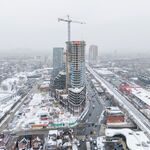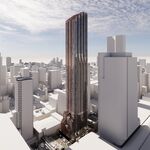guys, how am I seemingly the only person on this forum who has not had a great experience with the King Street Pilot? I take it daily from St. Andrew Station to Bathurst in the mornings around 9am and back the other direction around 5:30 pm in the evenings and it's been basically no difference for me. In fact, it seems that the far-side stops end up causing way more bunching as streetcars have to wait near-side as the previous streetcar sees people boarding and alighting. This regularly requires one full light phase before the next streetcar can proceed through. This causes a ripple-efffect that ends up accumulating more and more. Last night I had to get off at John Street and walk to St. Andrews as there had been 5-6 streetcars + a wheel trans vehicle bunched up ahead all having to wait one or two light-cycles to cross Spadina and University Avenues.
I don't know what the solution is other than either giving King Street signal priority, or moving far-side stops a but further past the intersection to allow more than one or two vehicles to load and off-load, or simply move stops at major intersections with large delays to nearside so that vehicles can load and offload while waiting for the red, OR take some flexity vehicles from another line and make King 100% new vehicles so that you don't have three vehicles for every one flexity's capacity. I'm willing to hold-0ff judgement until the new vehicles start to really replace the legacy fleet on King, but I feel like this pilot is having negligible impacts on peak hour operations, and that most of the improvements are seen in the off-peak periods. Just my observations, but I'd be very skeptical if the data doesn't prove this. Any thoughts?




